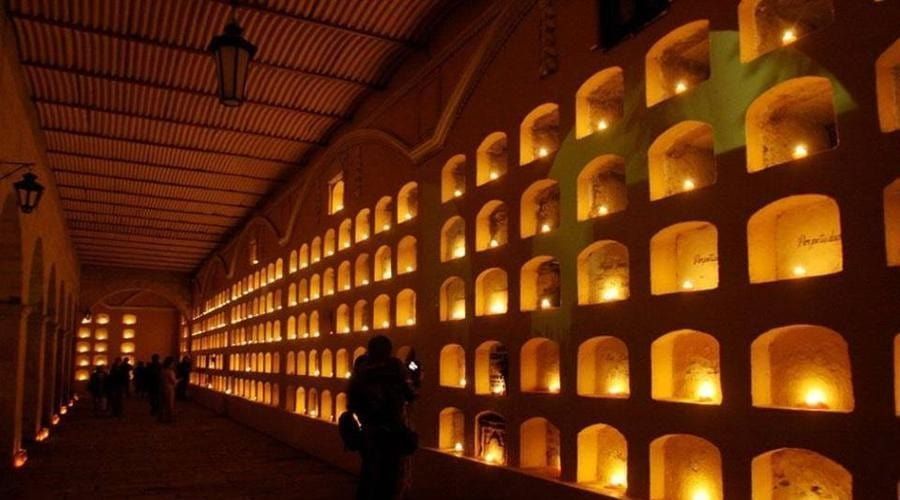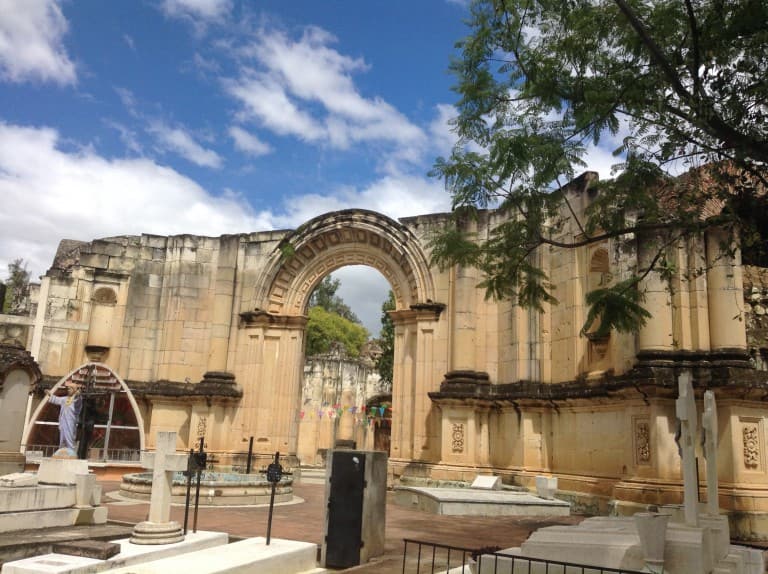The Tomb of the Forgotten Dead, the most visited in Oaxaca
Throughout the year, the tomb of the forgotten dead is the most visited tomb in the cemetery of San Miguel, in Oaxaca City.

The tomb of the forgotten dead is located in the center of the municipal cemetery. It is a site appreciated and respected by the community where more than one person makes the sign of the cross, and everyone is free to visit. Due to years of neglect, and the reuse of graves, people who have nowhere to meet their dead visit this tomb. It is a space with a high symbolic value.
There are several versions of the origin of the tomb, although the most widespread is the one that goes back to January 14, 1931, when an earthquake of 7.8 degrees caused a tragedy in the city, including the total destruction of the tiles of the cemetery.
The bones and decomposing bodies that were left in sight were burned while those who died during the earthquake were deposited in the common grave. According to versions of that time those ashes were concentrated in the same space that today occupies the tomb of the forgotten dead.
Over the years, during the reconstruction of the cemetery, in the center of a chapel unfinished since 1839, a mound was erected with a cross in the middle which was given the name of the tomb of the forgotten dead. The pedestal stands out in the middle of the San Miguel cemetery. The stone cross with the phrase "a flower, for the forgotten dead" catches the eye the moment one enters the also known as the municipal cemetery.
It is frequented by descendants who cannot find the tomb of their dead among the more than 10,000 that rest in the municipal cemetery. Visitors offer food, drinks, fruit, images, and prayers. Every day of the year it has fresh flowers and lighted candles. People of all social classes gather around this tomb, even if they do not know each other, they live together and talk to each other.
For those who are believers, wherever the remains have been left, it will be of some use to leave an offering at the tomb. No one dies for being buried. The memory and the soul do not die. Only those who are forgotten die.

The Origin
The origin of the San Miguel cemetery dates back to 1829, following the promulgation of the new burial laws, dictated by a smallpox epidemic. Five years later, the cemetery was delimited by a provisional fence, a chapel surrounded by niches was projected, but the work was postponed due to the constant riots that occurred at that time in the city of Oaxaca. Years later, the altar to the forgotten dead was erected in the middle of those foundations.
Between 1897 and 1899 a Tuscan-style building was built, consisting of four walls of 113 meters each and a simple frontispiece. In its interior, there are four galleries formed by 100 arches of the same order, with 2 thousand 355 niches or stone sepulchers symmetrically opened in the wide walls, where the bodies were introduced for a time, later canceled by recommendation of the sanitary authority.
The extension of the pantheon, its architectural conformation, and the foundations of a chapel in the center, make it a remarkable pantheon of the Republic, these are some of the reasons to declare it cultural patrimony of the city.

The forgotten characters
In the part of the niches symmetrically opened in the walls of the cemetery are among others the deputy Jorge Meixueiro Hernandez; the general and senator Francisco Meixueiro; the engineer and geographer Jorge L. Tamayo, technical consultant of the UN and National Prize of Economy, and many other illustrious personages.
The remains of the musician Macedonio Alcalá were also there, but they were lost during an earthquake when the area where his niche was located collapsed.
Among the tombs are Colonel José María Díaz Ordaz, General Guillermo Meixueiro, Doctor Ramón Pardo, Félix Díaz Mori "El Chato" (Porfirio Díaz's brother); Alfonso Martínez Berges, discoverer of uranium in Mexico; Generals Fidencio Hernández Campos and Fidencio Hernández Regalado, Gregorio N. Chávez, Albino Zertuche and Luis Meixueiro Delgado, who participated in the Carranza forces, as well as doctors Manuel Canseco Landero, Federico Ortiz Armengol, Aurelio Valdivieso and Jorge Pérez Guerrero, and orchestra conductor Eduardo Mata Asiaín, but their graves face the indifference and disdain of visitors or the people who should remember them.




